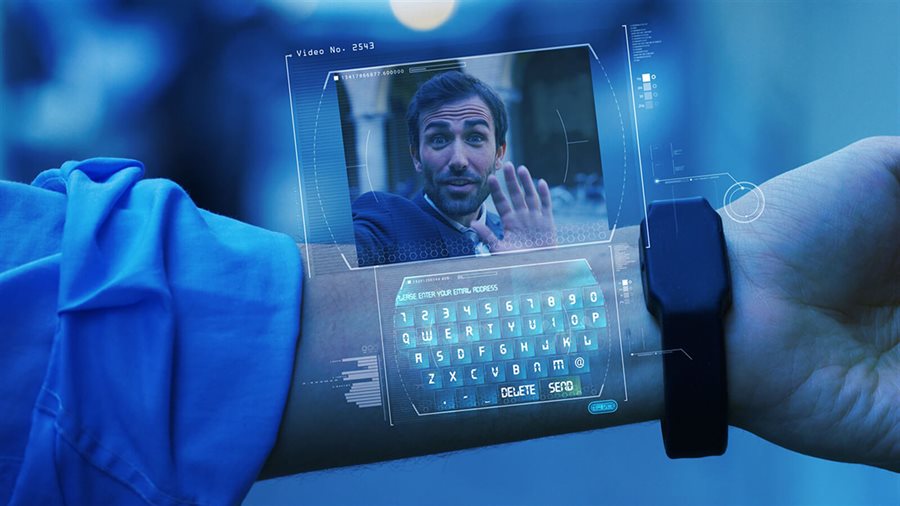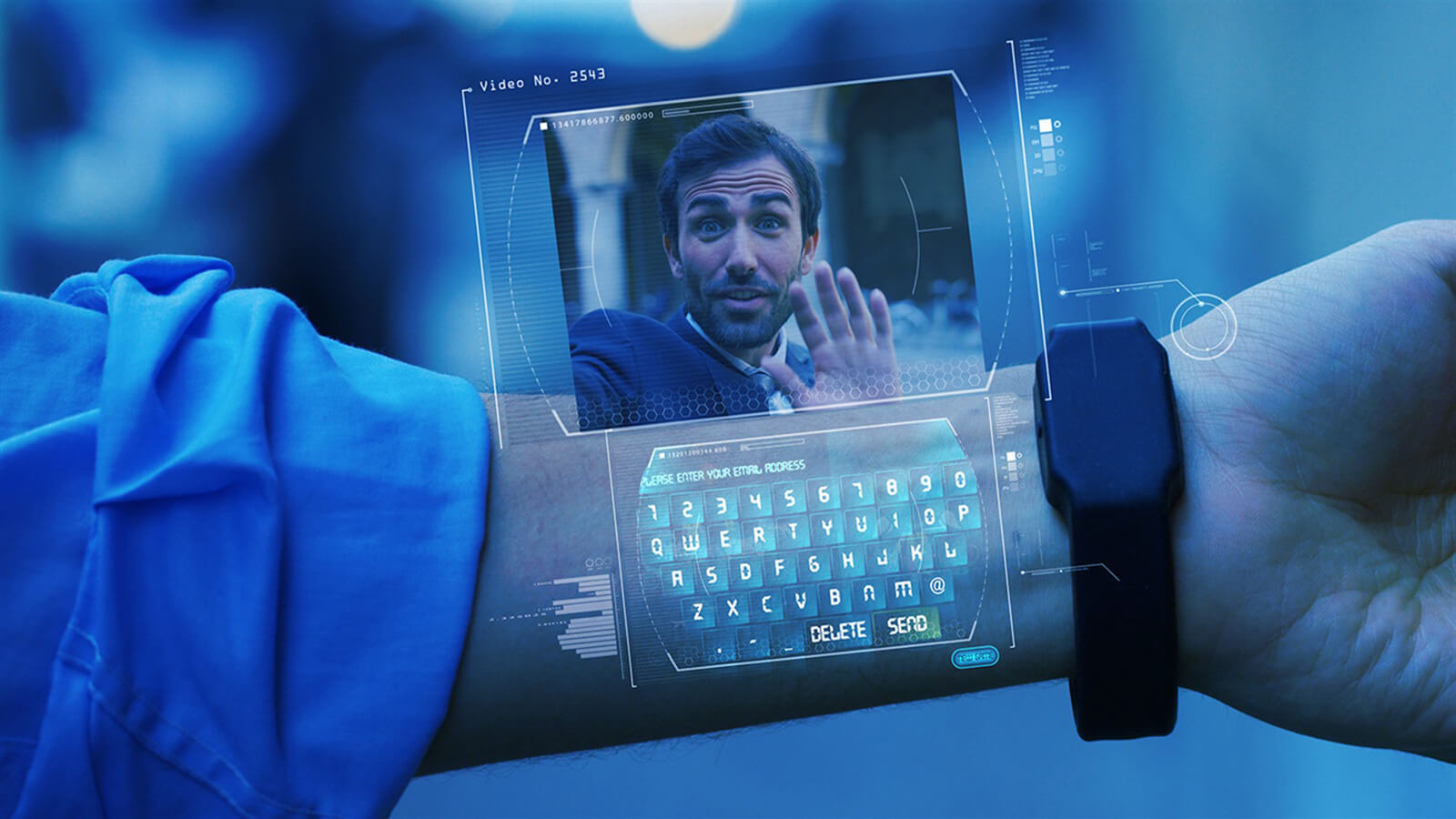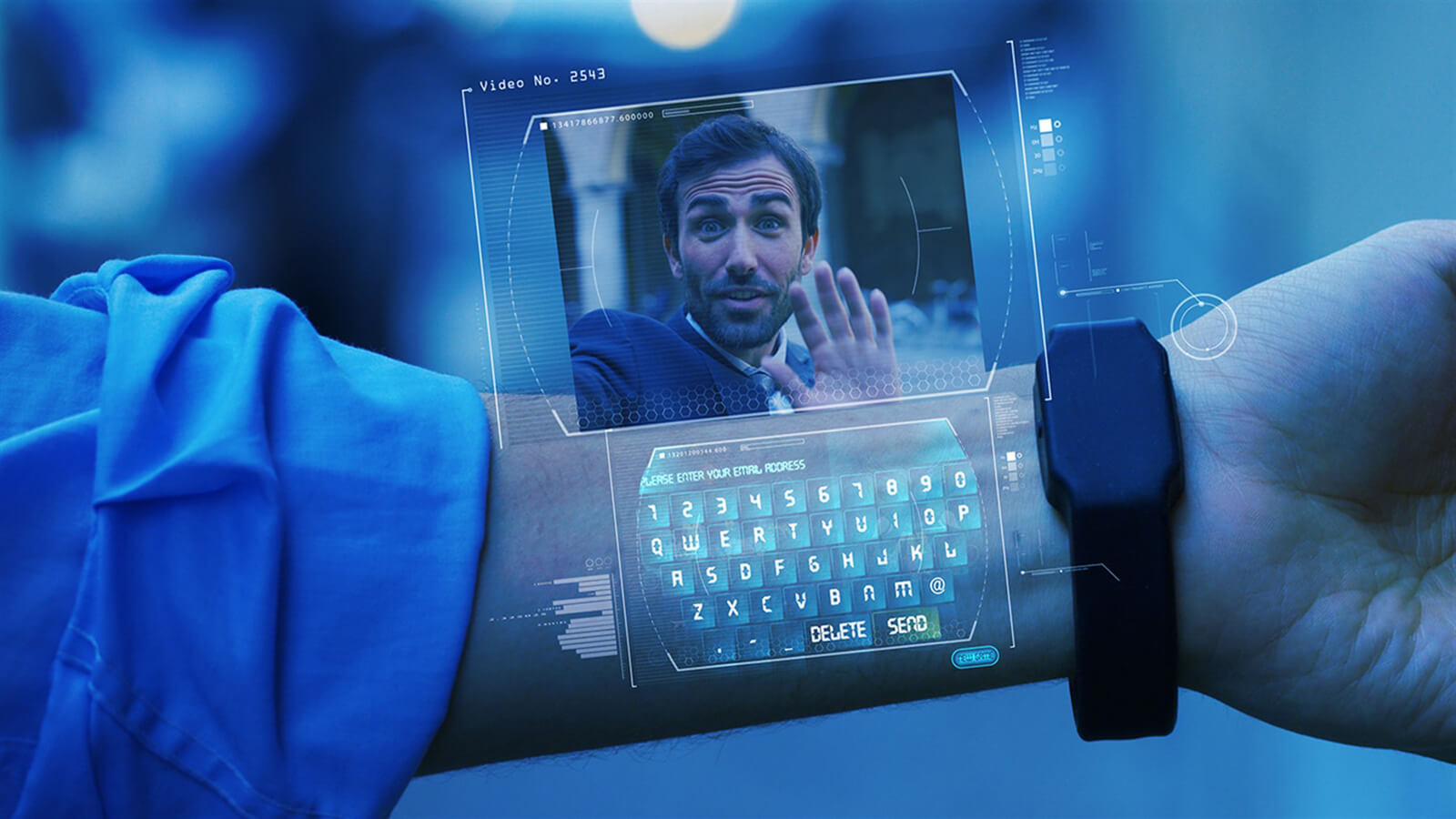Immersive and futuristic, holographic displays have long been a staple of science fiction. However, recent advancements in technology have brought this concept closer to reality. With the potential to revolutionize the way we interact with our smartphones, holographic displays promise a more engaging and dynamic mobile experience. But are these cutting-edge displays merely a novelty or a genuine game-changer for the future of mobile tech? As we delve into the world of holographic smartphones, we’ll explore the latest developments, challenges, and possibilities of this emerging technology. The future of mobile is about to get a whole lot brighter.
Holographic Displays in Smartphones: Sci-Fi or the Future of Mobile Tech?
The concept of Holographic Displays in smartphones has been a topic of interest for many years, with many considering it a staple of Science Fiction. However, with recent advancements in Technology, it seems that this concept may become a Reality sooner rather than later.
What are Holographic Displays?
Holographic Displays are a type of Display Technology that uses Laser and Light to create a Three-Dimensional image. This technology has been around for several decades, but it has only recently become Practical for use in Consumer Electronics.
How Do Holographic Displays Work?
Holographic Displays work by using a Laser to record a Hologram onto a Photopolymer material. The Hologram is then illuminated with Light, which creates a Three-Dimensional image. This image can be viewed from any angle, making it a Truly Immersive Experience.
Advantages of Holographic Displays in Smartphones
There are several Advantages to using Holographic Displays in smartphones. Some of these advantages include:
| Advantage | Description |
|---|---|
| Increased Immersion | The Three-Dimensional image created by Holographic Displays provides a more Immersive Experience for the user. |
| Improved User Interface | The Holographic Display allows for a more Intuitive and Interactive user interface. |
| Enhanced Gaming Experience | The Three-Dimensional image created by Holographic Displays provides a more Engaging and Realistic gaming experience. |
Challenges Facing Holographic Displays in Smartphones
Despite the Advantages of Holographic Displays in smartphones, there are still several Challenges that need to be addressed. Some of these challenges include: the need for High-Resolution and High-Speed Processors, as well as the need for Advanced Software and Algorithms to support the Holographic Display.
Future of Holographic Displays in Smartphones
The Future of Holographic Displays in smartphones is Promising. With the rapid advancements in Technology, it is likely that we will see Holographic Displays become a Standard Feature in smartphones in the near Future. This will provide a New Level of Immersion and Interaction for users, and will likely Revolutionize the way we use our smartphones.
What is the future of holographic technology?

The future of holographic technology is expected to revolutionize the way we interact with information and each other. This technology has the potential to transform various industries such as entertainment, education, and healthcare. With the advancement of artificial intelligence and machine learning, holographic technology is becoming more sophisticated and accessible.
Advancements in Holographic Display
The development of holographic displays is a crucial aspect of holographic technology. These displays will enable us to project 3D images and videos that can be viewed from any angle, creating an immersive experience. Some of the key features of advanced holographic displays include:
- High-resolution image projection capabilities
- Fast rendering speeds to reduce latency
- Compact design for increased portability
These advancements will pave the way for the widespread adoption of holographic technology in various applications, including gaming, education, and entertainment.
Holographic Applications in Education and Healthcare
Holographic technology has the potential to transform the way we learn and receive medical care. In education, holographic projections can be used to create interactive and engaging lessons, making complex concepts easier to understand. In healthcare, holographic technology can be used to create 3D models of organs and tissues, allowing doctors to practice surgeries and diagnose diseases more accurately. Some of the benefits of holographic technology in these fields include:
- Improved student engagement and retention rates
- Enhanced surgical precision and reduced risk of complications
- Personalized treatment plans based on individual patient needs
These applications will have a significant impact on the way we approach education and healthcare, making them more effective and efficient.
Challenges and Limitations of Holographic Technology
Despite the potential of holographic technology, there are several challenges and limitations that need to be addressed. One of the main challenges is the high cost of developing and implementing holographic systems. Additionally, there are concerns about eye strain and discomfort caused by prolonged use of holographic displays. Some of the ways to overcome these challenges include:
- Developing more affordable and accessible holographic systems
- Conducting research on the long-term effects of holographic technology on human health
- Creating guidelines for the safe and responsible use of holographic technology
By addressing these challenges, we can unlock the full potential of holographic technology and create a more immersive and interactive world.
Will phones ever have holograms?

The concept of having holograms on phones is an exciting and innovative idea that has been explored in various science fiction movies and TV shows. This technology has the potential to revolutionize the way we interact with our devices and experience virtual reality. With the rapid advancement of technological advancements, it’s possible that we may see holographic displays on phones in the near future.
Current State of Holographic Technology
The current state of holographic technology is still in its early stages, but it has shown promising results. Companies like Microsoft and Google are working on developing holographic displays that can be integrated into phones. These displays use lasers and artificial intelligence to create 3D images that appear to float in mid-air. Some of the key features of holographic technology include:
- High-resolution displays that can project high-quality images
- Advanced algorithms that can track the user’s eye movement and hand gestures
- Machine learning capabilities that can improve the user experience over time
Challenges in Implementing Holographic Technology
Despite the promising results, there are several challenges that need to be addressed before holographic technology can be widely adopted. One of the main challenges is the cost of producing holographic displays, which is currently prohibitively expensive. Additionally, there are technical challenges related to image quality, latency, and user experience. Some of the key challenges include:
- Developing affordable and high-quality holographic displays
- Improving the user experience through intuitive interfaces and responsive interactions
- Addressing issues related to eye strain and user fatigue
Future Possibilities of Holographic Phones
The future of holographic phones holds a lot of promise and possibilities. With the advancement of technological advancements, we can expect to see holographic displays that are more affordable, higher quality, and more user-friendly. Some of the potential applications of holographic phones include:
- Immersive gaming experiences that allow users to interact with 3D environments
- Virtual reality applications that enable users to explore new worlds and interact with virtual objects
- Enhanced communication capabilities that allow users to connect with others in a more immersive and interactive way
What is the holographic phone concept?

The holographic phone concept is a revolutionary idea that involves creating a phone that can project holographic images and videos, allowing users to interact with them in a more immersive and engaging way. This concept has been around for several years, with various companies and researchers exploring its potential. The idea is to create a phone that can capture and display 3D holograms, which would enable users to experience a more realistic and interactive visual experience.
How Holographic Phones Work
The holographic phone concept relies on the use of lasers, sensors, and artificial intelligence to capture and display holographic images. The phone would use a laser to record the 3D image of an object or person, and then use sensors to track the user’s movement and adjust the hologram accordingly. The artificial intelligence would then process the data and render the hologram in real-time, allowing the user to interact with it seamlessly. Some of the key features of holographic phones include:
- High-resolution displays to showcase the holographic images in detail
- Advanced sensors to track the user’s movement and adjust the hologram accordingly
- Powerful processors to render the hologram in real-time and handle the complex calculations involved
Benefits of Holographic Phones
The holographic phone concept offers several benefits, including a more immersive and interactive visual experience. With holographic phones, users would be able to experience 3D holograms that appear to float in mid-air, allowing them to interact with them in a more natural and intuitive way. The benefits of holographic phones include:
- Enhanced entertainment experiences, such as 3D games and holographic videos
- Improved communication, with the ability to make holographic video calls and share 3D images
- Increased productivity, with the ability to use holographic displays to visualize complex data and interact with it in a more intuitive way
Challenges and Limitations of Holographic Phones
Despite the potential benefits of holographic phones, there are several challenges and limitations that need to be addressed. One of the main challenges is the technical complexity of creating a holographic display that can project high-quality 3D images. Additionally, there are concerns about the cost and availability of holographic phones, as well as the limited content available for holographic displays. Some of the key challenges and limitations include:
- Technical difficulties in creating a holographic display that can project high-quality 3D images
- High development costs, which could make holographic phones expensive and inaccessible to many users
- Limited content availability, which could limit the appeal of holographic phones to users
Are holographic displays possible?

This is a question that has been on the minds of many scientists and technology enthusiasts for a long time. The concept of holographic displays has been around for several decades, but it’s only in recent years that we’ve seen significant advancements in this field. Holographic technology has the potential to revolutionize the way we interact with information and each other.
What are Holographic Displays?
Holographic displays are devices that can project three-dimensional images into space, allowing users to view them from any angle. These displays use laser technology to record and reconstruct the light waves that bounce off an object, creating a 3D image that appears to float in mid-air. This technology has many potential applications, including gaming, education, and entertainment. Some of the key features of holographic displays include:
- High-resolution images with precise control over light waves
- Interactive capabilities, allowing users to manipulate 3D objects
- Immersive experiences, blurring the line between the physical and virtual worlds
How Do Holographic Displays Work?
Holographic displays work by using lasers to record the light waves that bounce off an object. This information is then used to create a 3D image that can be projected into space. The process involves several steps, including recording, processing, and reconstructing the light waves. Artificial intelligence and machine learning algorithms are often used to refine the image and improve its quality. Some of the key technologies used in holographic displays include:
- Light field technology, which captures the way light interacts with an object
- Volumetric rendering, which creates 3D images from 2D data
- Optical components, such as lenses and mirrors, which manipulate light waves
What are the Challenges in Developing Holographic Displays?
Despite the significant advancements in holographic technology, there are still many challenges to overcome. One of the main challenges is scalability, as current holographic displays are often small and expensive. Cost is another major factor, as the technology required to produce high-quality holographic images is still relatively rare and expensive. Additionally, there are also challenges related to content creation, as producing 3D content that is compatible with holographic displays can be complex and time-consuming. Some of the key challenges include:
- Developing cost-effective and scalable technologies
- Creating high-quality 3D content that is compatible with holographic displays
- Addressing issues related to eye strain and user fatigue
Frequently Asked Questions
What are Holographic Displays and How Do They Work?
Holographic displays are a type of display technology that uses lasers, mirrors, and sensors to create a three-dimensional image that appears to float in space. This technology is still in its infancy, but it has the potential to revolutionize the way we interact with our smartphones. The basic idea behind holographic displays is to use holography to record and display 3D images. This is achieved by using a laser to record the interference pattern of an object, which is then reconstructed to create a hologram. In the context of smartphones, holographic displays could be used to create interactive 3D interfaces, augmented reality experiences, and even 3D gaming.
Are Holographic Displays Science Fiction or a Realistic Goal for Smartphone Manufacturers?
While holographic displays may seem like science fiction, they are actually a realistic goal for smartphone manufacturers. Several companies, including Red, Holo, and Samsung, are already working on developing holographic display technology for smartphones. These companies are using advanced materials and manufacturing techniques to create high-resolution, see-through displays that can be used to create holographic images. However, there are still several technical challenges that need to be overcome before holographic displays can become a reality. For example, holographic displays require a lot of processing power and memory, which can be a challenge for smartphones.
What are the Potential Benefits of Holographic Displays in Smartphones?
The potential benefits of holographic displays in smartphones are numerous. For example, holographic displays could be used to create interactive 3D interfaces that allow users to manipulate objects in 3D space. This could be useful for a variety of applications, including gaming, education, and healthcare. Holographic displays could also be used to create augmented reality experiences that overlay digital information onto the real world. This could be useful for applications such as navigation, shopping, and tourism. Additionally, holographic displays could be used to create 3D videos and images that are more immersive and engaging than traditional 2D content.
What are the Challenges and Limitations of Implementing Holographic Displays in Smartphones?
While holographic displays have the potential to revolutionize the way we interact with our smartphones, there are also several challenges and limitations that need to be overcome. For example, holographic displays require a lot of processing power and memory, which can be a challenge for smartphones. Additionally, holographic displays are still a relatively new technology, and there are many technical issues that need to be resolved before they can be widely adopted. For example, holographic displays can be sensitive to light and viewing angles, which can affect their image quality. Furthermore, holographic displays are still expensive to manufacture, which could make them prohibitively expensive for smartphone manufacturers.
